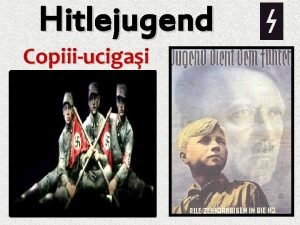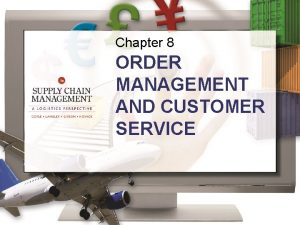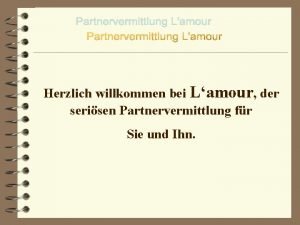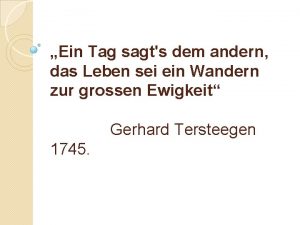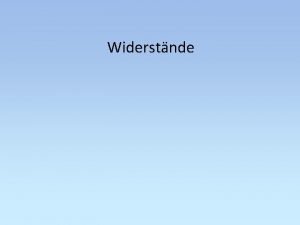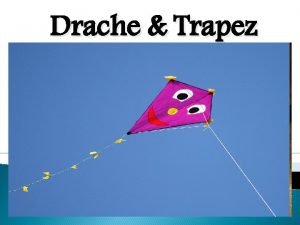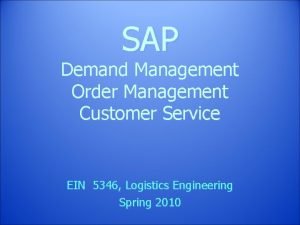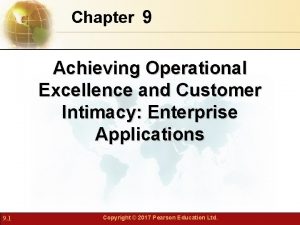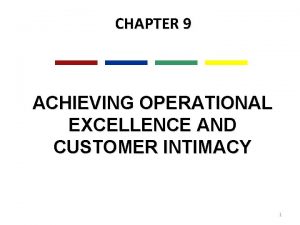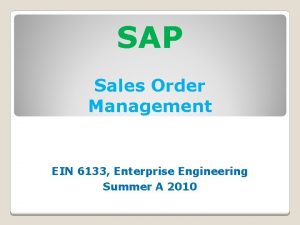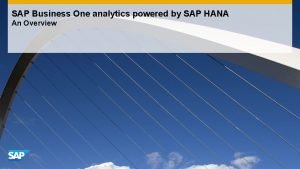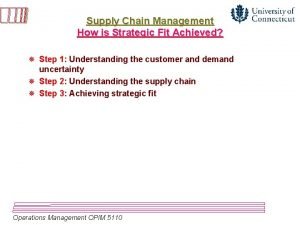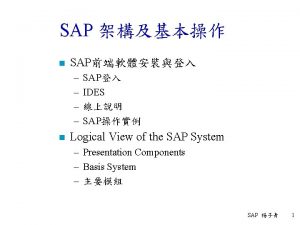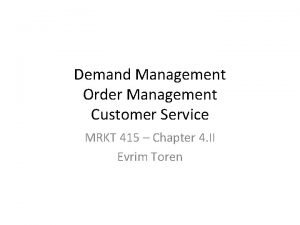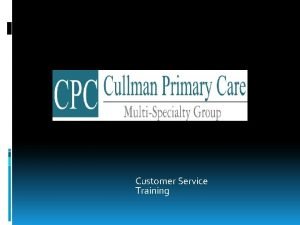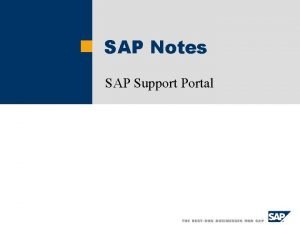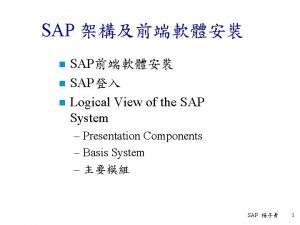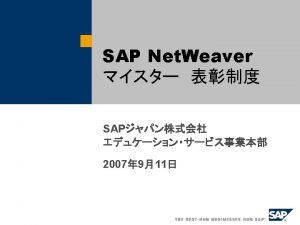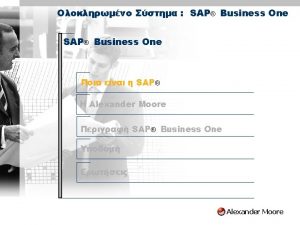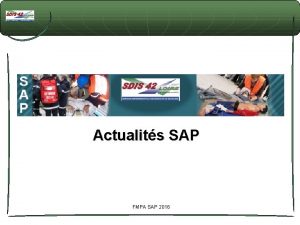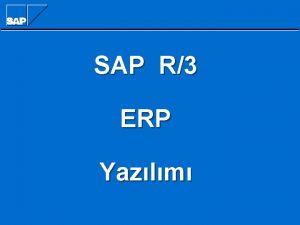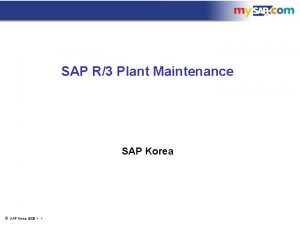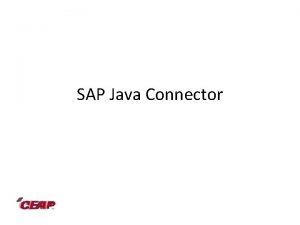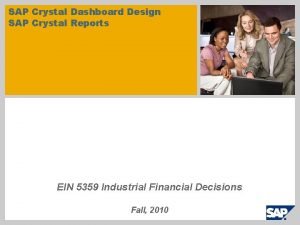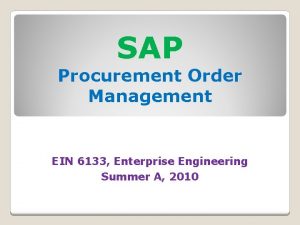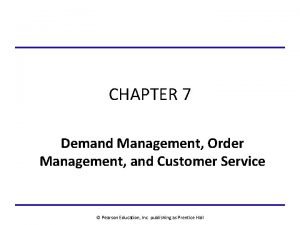SAP Demand Management Order Management Customer Service EIN




































- Slides: 36

SAP Demand Management Order Management Customer Service EIN 5346, Logistics Engineering Spring 2010

Supply Chain Planning Process Sales Forecast SALES AND OPERATIONS PLANNING Production Plan Rough-cut capacity planning Distribution Req. Planning DRP Master Production Scheduling MPS Material Req. Planning MRP DETAIL PLANNING Procurement SCHEDULING AND EXECUTION Detail capacity planning Distribution Manufacturing

PP: Forecasting is the foundation of a reliable SOP Accurate forecasts are essential in the manufacturing sector – overstocked & understocked warehouses result in the same thing: a loss in profits. Forecasts are ALWAYS WRONG


Constant Model: consumption values vary very little from a stable mean value. Trend Model, consumption values fall or rise constantly over a long period of time with only occasional deviations. Seasonal trend: consumption value is characterized by a continual increase or decrease of the mean value. Seasonal Trend Model: consumption value vary by both trend and season patterns. The system calculates the forecast values by means of first-order exponential smoothing.

PP: Forecasting Models – – Trend Seasonal Trend and Seasonal Constant Selecting a Model – Automatically – Manually

Alpha factor Used for smoothing the basic value. If not specify an alpha factor, the system will automatically use the alpha factor 0. 2. Beta factor Used for smoothing the trend value. If not specify a beta factor, the system will automatically use the beta factor 0. 1. Gamma factor Uses the for smoothing the seasonal index. If not specify a gamma factor, the system will automatically use the gamma factor 0. 3. Delta factor Uses for smoothing the mean absolute deviation and the error total. If not specify a delta factor, the system will automatically use the delta factor 0. 3.

Simple Exponential Smoothing (Constant Model) Simple exponential smoothing is suitable if the historic data shows a constant trend. ● Smoothing factor settings:

Seasonal Exponential Smoothing (Seasonal Model) Choose this strategy if your historic values show seasonal fluctuations (for example, annual fluctuations) from a constant base value. ● Mandatory forecast parameter: Periods per Season ● Smoothing factor settings: Alpha (Base Value), Gamma (seasonal components).

Linear Exponential Smoothing (Trend Model) The forecast is calculated according to Holt’s method and is suitable if historic values display an upward or downward trend. ● Smoothing factor settings: Alpha (Base Value), Beta (Trend Value).

Seasonal Trend Exponential Smoothing The forecast is calculated according to Winter/Holt’s multiplicative method and is suitable if historic values display seasonal fluctuations from an upward or downward trend. The fluctuation increases with an upward trend. ● Mandatory forecast parameter: Periods per Season ● Smoothing factor settings: Alpha (Base Value), Beta (Trend Value), Gamma (seasonal components).

PP: Sales and Operations Planning (SOP) Information Origination – Sales – Marketing – Manufacturing – Accounting – Human Resources – Purchasing Intra-firm Collaboration – Institutional Common Sense

PP: Demand Management Forecast Sales Planned Independent Requirements Customer Independent Requirements Demand Program MPS / MRP

PP: Sales and Operations Planning (SOP) Flexible forecasting and planning tool Usually consists of three steps: – Sales Plan – Production Plan – Rough Cut Capacity Planned at an aggregate level in time buckets

PP: Demand Management Link between Strategic Planning (SOP) & Detailed Planning (MPS/MRP) The results of Demand Mgmt is called the Demand Program, it is generated from our independent requirements - PIR and CIR Product Groups Bikes Disaggregation 45% 55% Mountain Touring 30% 70% 40% 60% 18 Speed 24 Speed Material 40% 60% 50% Red 24 M Blue 24 M Red 24 T Blue 24 T

PP: Transfer from High Level to Detailed Planning at Group Level Bikes Demand Planning Data Disaggregation 45% 55% Mountain Touring 30% 70% 40% 60% 18 Speed 24 Speed Planning at Material Level 40% 60% 50% Red 24 M Blue 24 M Red 24 T Blue 24 T Transfer Operative Planning Data Planned Independent Requirements At Material and Plant Level

PP: Planning Strategies Planning strategies represent the business procedures for – The planning of production quantities – Dates Wide range of strategies – Make-To-Stock (MTS) – Make-To-order (MTO) Driven by sales orders – Configurable materials Mass customization of one – Assembly orders

PP: Material Requirements Planning (MRP) In MRP, the system calculates the net requirements while considering available warehouse stock and scheduled receipts from purchasing and production During MRP, all levels of the bill of material are planned The output of MRP is a detailed production and/or purchasing plan

PP: Material Requirements Planning (MRP) Detailed planning level Primary Functions – Monitor inventory stocks – Determine material needs Quantity Timing – Generate purchase or production orders

PP: Material Requirements Planning (MRP) MRP is used to ensure the availability of materials based on the need generated by MPS or the Demand Program – 5 Logical Steps Net Requirements Calculation Lot Size Calculation Procurement Type Scheduling BOM Explosion

MRP – Net Requirements Procurement Proposal Firmed Receipts Firmed Orders or Purchase Requisitions Stock Shortage Requirements – Planned Ind. Req. , Reservations Sales Orders, Etc. Safety Stock

Procurement Type External Procurement – Purchase Requisition – Purchase Order – Schedule Line Internal Procurement – Planned Order Production Order

PP: Output of MRP In-House Production Planned Order External Procurement Convert to Production Orders Purchase Requisitions Purchase Orders Schedule Lines

PP: Orders, Orders Planned Order (planning) – a request created in the planning run for a material in the future (converts to either a production or purchase order) Production Order (execution) – a request or instruction internally to produce a specific product at a specific time Purchase Order (execution) – a request or instruction to a vendor for a material or service at a specific time

PP: Execution – Production Order Production orders are used to control production operations and associated costs – Production Orders define the following material produced quantity location time line work involved resources used how to costs are settled

PP: Execution – Production Order How What Quantity BOM Time Line

PP: Execution – Schedule Calculates the production dates and capacity requirements for all operations within an order – Determines a Routing Operation specific time lines Material Consumption Points – Material Master Scheduling Margin Key (Floats) – Work Center Formulas Standard Inter-operation Times

PP: Execution – Schedule & Release The time between scheduling and releasing an order is used for company checks and any preparation needed for the processing of the order Once an order has been released it is ready for execution, we can at this time – print shop floor documents – execute goods movements – accept confirmations against the order

PP: Execution – Material Withdrawal When a production order is created it references a BOM to determine the necessary components to produce the material, it then places a reservation on each of the components Upon release of the order (or operation) you can withdraw the reserved materials from inventory – reservation is updated – inventory is updated – costs are assigned to the order as actual costs

PP: Execution – Confirmations are used to monitor and track the progression of an order through its production cycle – confirmation can be done at the operation or order level Exact confirmation shortly after completion of an operation is essential for realistic production planning and control

PP: Execution – Goods Receipt Acceptance of the confirmed quantity of output from the production order into stock – effects of the Goods Receipt updates stock quantity updates stock value price stored for future valuation changes production order is updated – Three documents are created material document accounting document controlling document

PP: Execution – Order Settlement Consists of settling the actual costs incurred in the order to one or more receiver cost objects – receivers could include: a material, a cost center, an internal order, a sales order, a project, a network, a fixed asset

PP: Execution – Order Settlement Settling a Production Order to Stock – debt posting is made to the Production Order with the value of the material – difference between the debt posting and credit posting is posted to a price difference account Material 80 Prod. Order 100 Price Diff 20 **Material Price determine by the quantity produced times the Standard Price in the Material Master.

PP: Execution – Order Settlement Costs analyzed – Primary Materials External Processing – Secondary Production, Material, and Administrative Overhead Labor n Cost Analysis Reporting Calculate and analyze planned costs, target costs, and actual costs of the production order. Calculate and analyze variances

PP: Order Settlement

PP: Order Status
 Ein volk ein reich ein führer
Ein volk ein reich ein führer Order management & customer service relationship concept
Order management & customer service relationship concept Pengertian customer relation
Pengertian customer relation Ein neuer morgen ein neues leben
Ein neuer morgen ein neues leben Slidetodoc.com
Slidetodoc.com Serisen
Serisen Ein tag der sagts dem anderen
Ein tag der sagts dem anderen Ein hund ist ein herz auf vier pfoten
Ein hund ist ein herz auf vier pfoten Wann ist ein mann ein mann text
Wann ist ein mann ein mann text Heidenröslein analyse
Heidenröslein analyse Stromkreismodelle
Stromkreismodelle Ein neuer tag und ein neuer morgen
Ein neuer tag und ein neuer morgen Trapez in der natur
Trapez in der natur Adp payroll self service
Adp payroll self service Sap demand management
Sap demand management 1st order 2nd order 3rd order neurons
1st order 2nd order 3rd order neurons Customer relationship management and customer intimacy
Customer relationship management and customer intimacy Customer relationship management and customer intimacy
Customer relationship management and customer intimacy Customer relationship management and customer intimacy
Customer relationship management and customer intimacy Sales order management sap
Sales order management sap Sap business one analytics powered by sap hana
Sap business one analytics powered by sap hana Gaps model of retail management
Gaps model of retail management Conflict management customer service
Conflict management customer service Sap sales and operations planning
Sap sales and operations planning Deterministic and stochastic inventory models
Deterministic and stochastic inventory models Deficient demand and excess demand
Deficient demand and excess demand Individual demand vs market demand
Individual demand vs market demand Dependent vs independent demand
Dependent vs independent demand Grapikong paglalarawan ng demand schedule
Grapikong paglalarawan ng demand schedule Independent vs dependent demand
Independent vs dependent demand Module 5 supply and demand introduction and demand
Module 5 supply and demand introduction and demand Types of demand forecasting in managerial economics
Types of demand forecasting in managerial economics Distinguish between individual demand and market demand
Distinguish between individual demand and market demand Inventory models for independent demand
Inventory models for independent demand Strategic fit supply chain management
Strategic fit supply chain management Marketing information and customer insights are
Marketing information and customer insights are Beyond customer satisfaction to customer loyalty
Beyond customer satisfaction to customer loyalty
